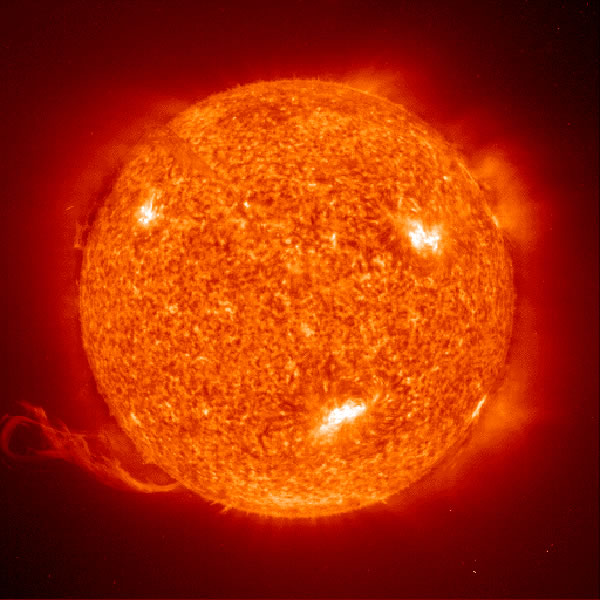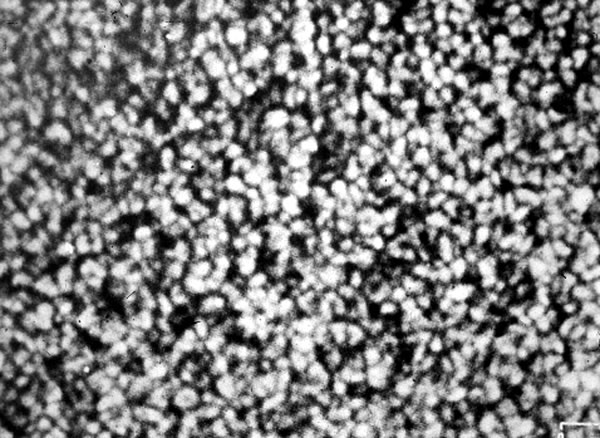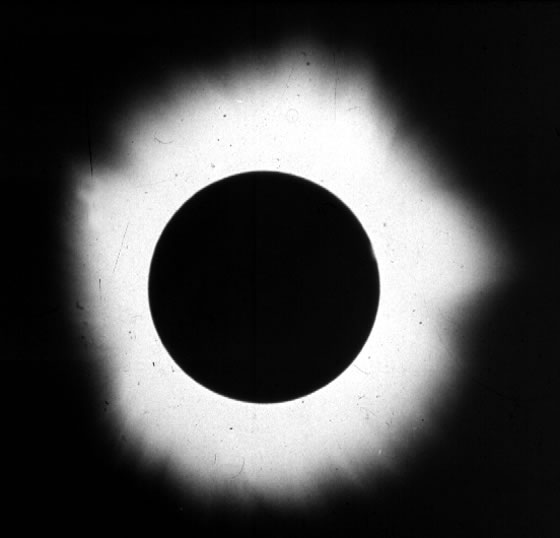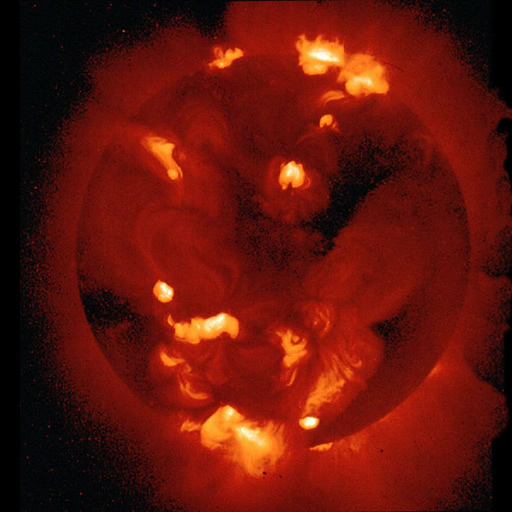Explanation of the Aurorae: The Sun
VISUAL 9 (still): Sun

A key player in the origin of these lights in our Earth’s sky is the Sun, a huge ball of gas converting enormous amounts of energy in its core by a nuclear reaction. It is like millions of nuclear bombs going off every second. Only a very small portion of this energy reaches the Earth, but it is enough to sustain all life on Earth.
VISUAL 10 (still): Solar Granulation

Energy from the core of the Sun can take a long time, perhaps even several hundred thousand years to reach the surface. On the Sun’s surface, hot gas bubbles form like the bubbles that form on the surface of a cooking pan. The bubbles are packed very closely, covering all of the Sun’s surface. Each granule seen in this photograph is comparable in size to North America.
VISUAL 11 (still): Solar Corona During Eclipse

The upper most layer of gasses surrounding the Sun is called the corona. It can be seen during a total eclipse of the Sun. Particles are streaming out of the corona. The flow of particles is called “solar wind.” Instead of air molecules, the solar wind particles are mostly electrons and protons—electrically charged particles that are the tiny building blocks of all matter. That wind is very different from wind we experience on Earth.
VISUAL 12 (still): Coronal Holes In UV

It was a surprise to some scientists when they discovered some years ago that there are holes in the Sun’s upper atmosphere. Such coronal holes can be seen in this picture as darker parts on the Sun. Through these holes particles from deeper in the Sun are squirting out into space at even higher speed than normal solar wind. Fluctuations in solar wind can result in different apparitions of the northern lights. The Sun rotates about once every twenty six days. The coronal holes are rotating with it, acting as “nozzles” of higher speed solar wind. If the scene could be viewed from “above” the solar system it would have the same appearance as a garden hose being swung around in a circle.
VISUAL 13 (movie): Coronal Mass Ejections
[Play video of a coronal mass ejection eruption from the Sun.]
Optional
Use the garden hose effect projector.
The solar wind appears to leave the Sun in a spiral pattern. This is called the “garden hose effect.” Watch above as the solar wind sweeps toward the Earth. Call out when the Earth is in the solar wind.
[Fade off at black.]

